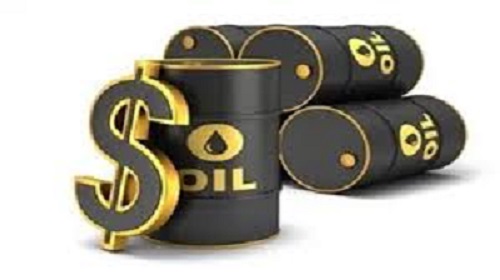The fundamentals of the 2019 budget are under threat as crude oil price slumped again yesterday to flatten at $60 per barrel, the same benchmark on which the N8.8 trillion budget was predicated.
During the preparations of the budget estimates, crude oil price was around $80, thus giving the federal government the comfort to ignore the $50 benchmark proposed in the Economic Recovery Growth Plan (ERGP) and to opt for $60 as the oil benchmark on which to base revenue projections for the budget.
Concerns that Iranian oil exports to the global market would drop because of renewed sanctions by the United States had pushed the price slightly above $80 per barrel for the first time since November 2014.
However, the unexpected rise in the US crude inventories, coupled with weaker outlook for global demand, has continued to push down oil prices, despite the efforts of the Organisation of Petroleum Exporting Countries (OPEC) and non-OPEC producers, led by Russia, to reduce excess supply in the global market.
Oil prices yesterday fell more than two per cent, pressured by a sudden rise in US crude and weaker demand.
While the international benchmark, Brent crude fell $1.36, or 2.2 per cent, to $60.93 per barrel, the US West Texas Intermediate crude was down $1.39, or 2.6 per cent, to $51.88 per barrel.
The slump in the oil prices came after the US Energy Information Administration (EIA) reported domestic crude stockpiles climbed last week by 2.2 million barrels, against analysts’ forecast of a decrease by 481,000 barrels.
Reuters reported that petrol stocks also increased more than expected.
The EIA had Tuesday cut its forecasts for 2019 world oil demand growth and US crude production.
Trade tensions between the US and China, the world’s two biggest oil consumers, also weighed on prices.
The oil market has been weighed down by concerns about slowing global growth due to the US-China trade war and President Donald Trump’s threats last week to place tariffs on Mexican imports.
Trump also said he was holding up a trade deal with China.
To prevent oversupply and prop up the market, OPEC, together with allies including Russia, has withheld some production since the start of the year.
The producers, collectively known as OPEC +, have limited their oil output by 1.2 million barrels per day since January 1, this year to prop up prices.
With the next meeting of OPEC set for June 25, the oil market is looking if the world’s major oil producers will prolong their supply cuts.
Goldman Sachs was quoted by agency reports as saying an uncertain macroeconomic outlook and volatile oil production from Iran and others could lead OPEC to roll over supply cuts.
The Energy Minister of the United Arab Emirates, Suhail bin Mohammed al-Mazroui, said on Tuesday that OPEC members were close to reaching an agreement on continuing production cuts.
After OPEC’s meeting on June 25, the group will hold talks with its allies led by Russia on June 26, although sources have told Reuters that Russia has suggested a date change to between July 3 and 4.
Source: THISDAY













